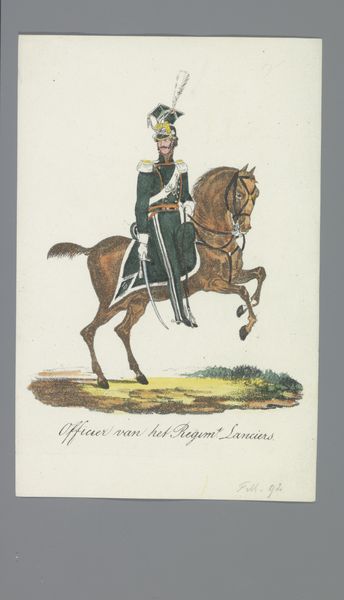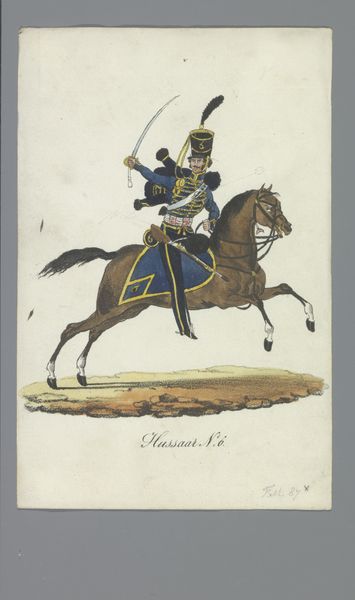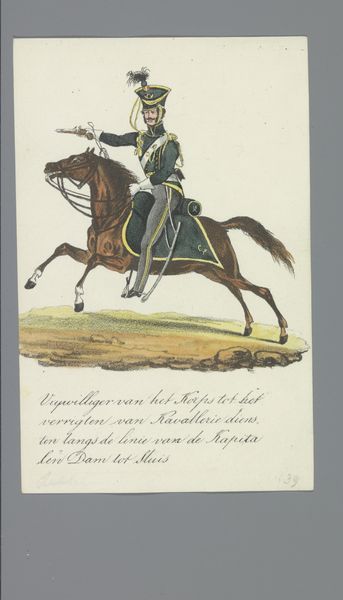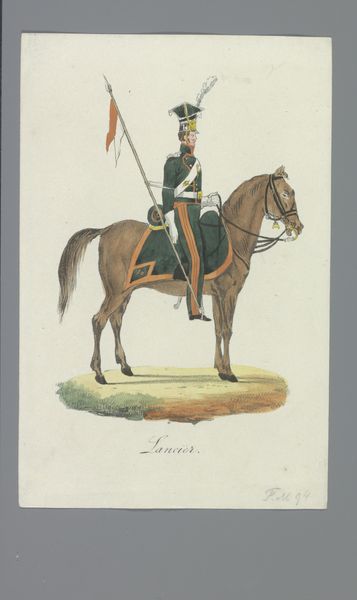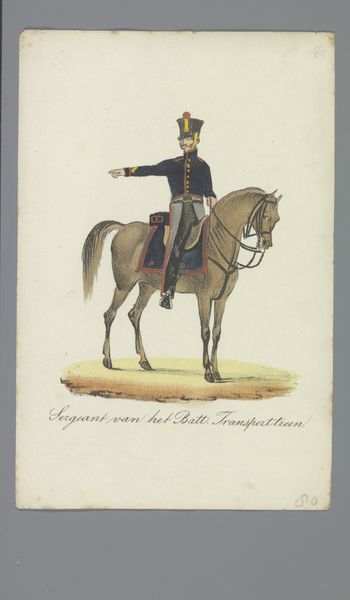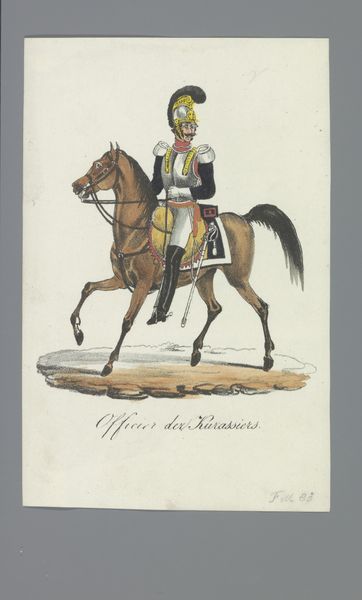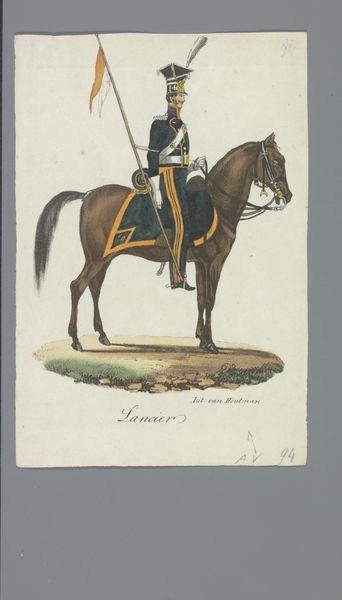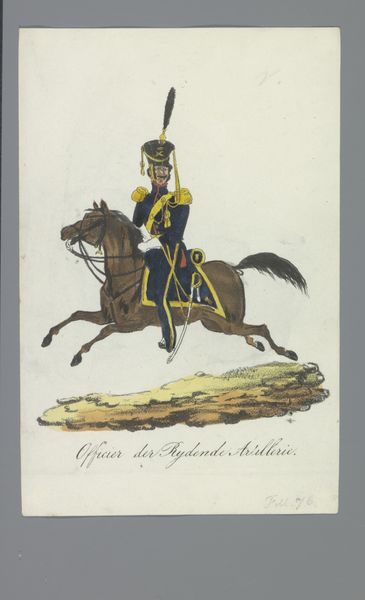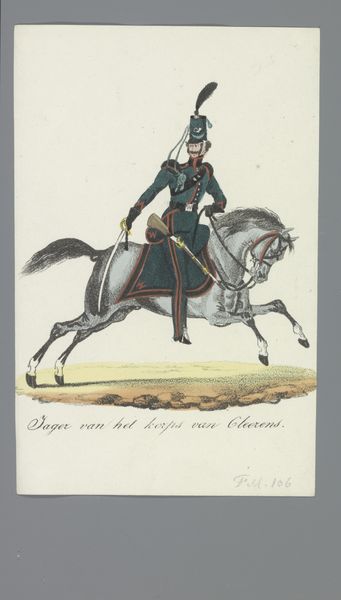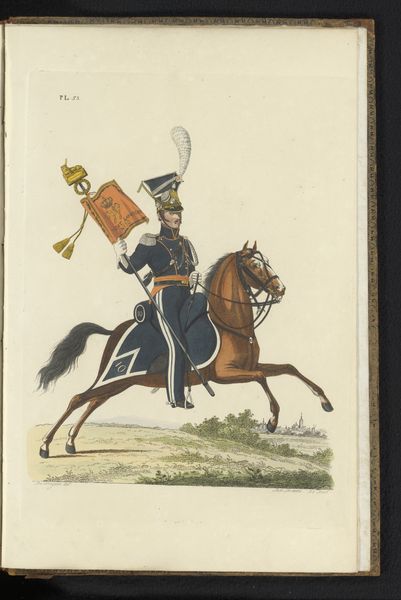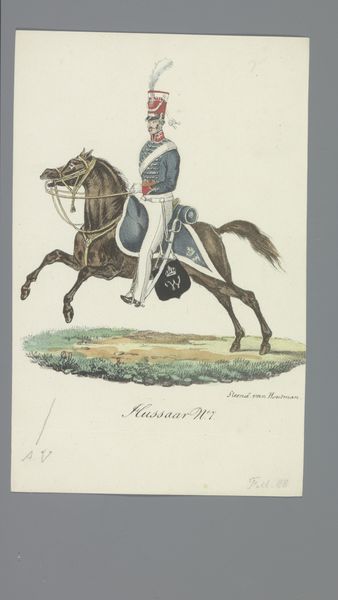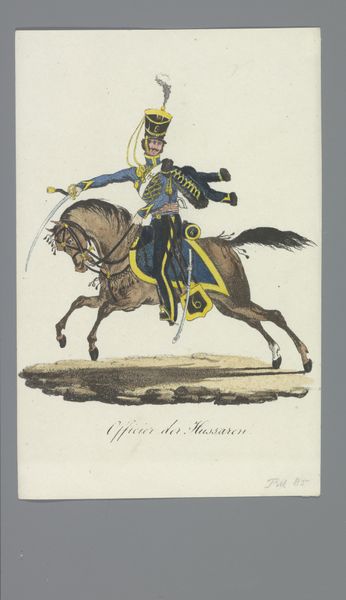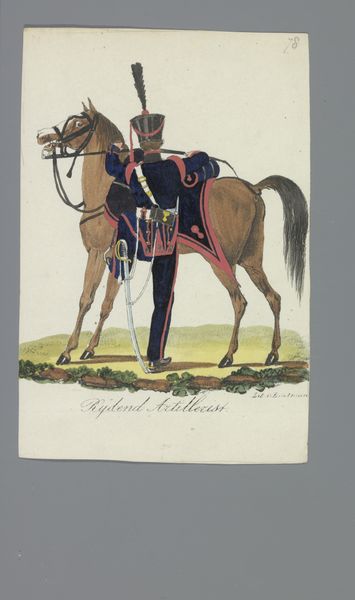
drawing, paper, watercolor
#
portrait
#
drawing
#
paper
#
watercolor
#
romanticism
#
costume
#
watercolour illustration
#
genre-painting
#
miniature
Dimensions: height 170 mm, width 110 mm
Copyright: Rijks Museum: Open Domain
Albertus Verhoesen made this hand-colored engraving of a standard-bearer of the Lancers Regiment sometime in the 19th century. It's an image steeped in the visual codes of military power and national identity. Made in the Netherlands, the print offers a glimpse into the visual culture of a nation finding its footing after the Napoleonic era. Consider the figure's proud posture and the meticulously rendered uniform. These details speak to the importance of military pageantry in fostering a sense of national unity and projecting power, both domestically and abroad. The Dutch army had to be rebuilt after French occupation and the loss of Belgium in 1830. Military parades and displays of strength were common during this period. As historians, we delve into such imagery, exploring the archives of military history and the social conditions that shaped such powerful symbols. By understanding the context, we can better understand art's role in reflecting and shaping society.
Comments
No comments
Be the first to comment and join the conversation on the ultimate creative platform.
